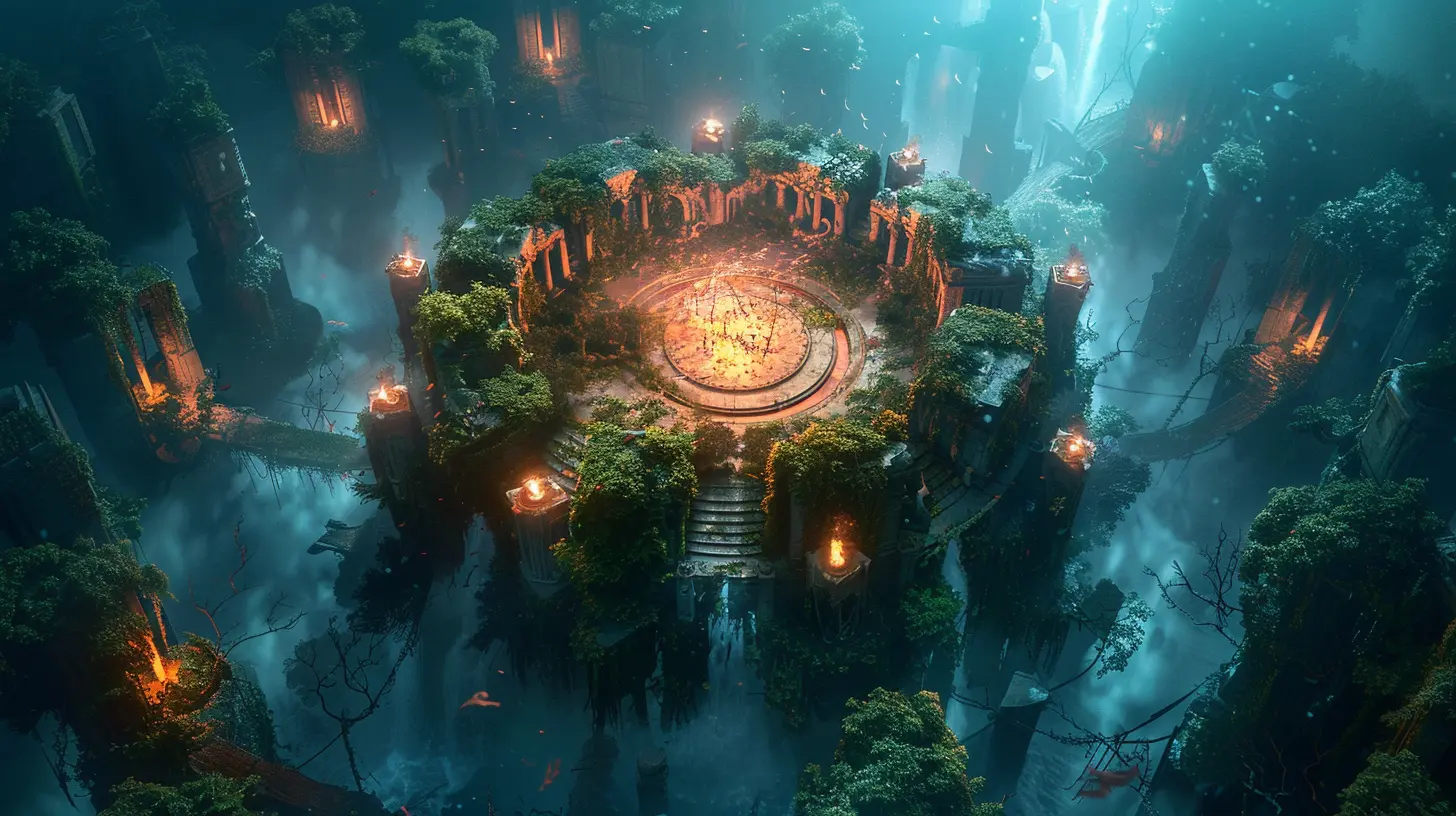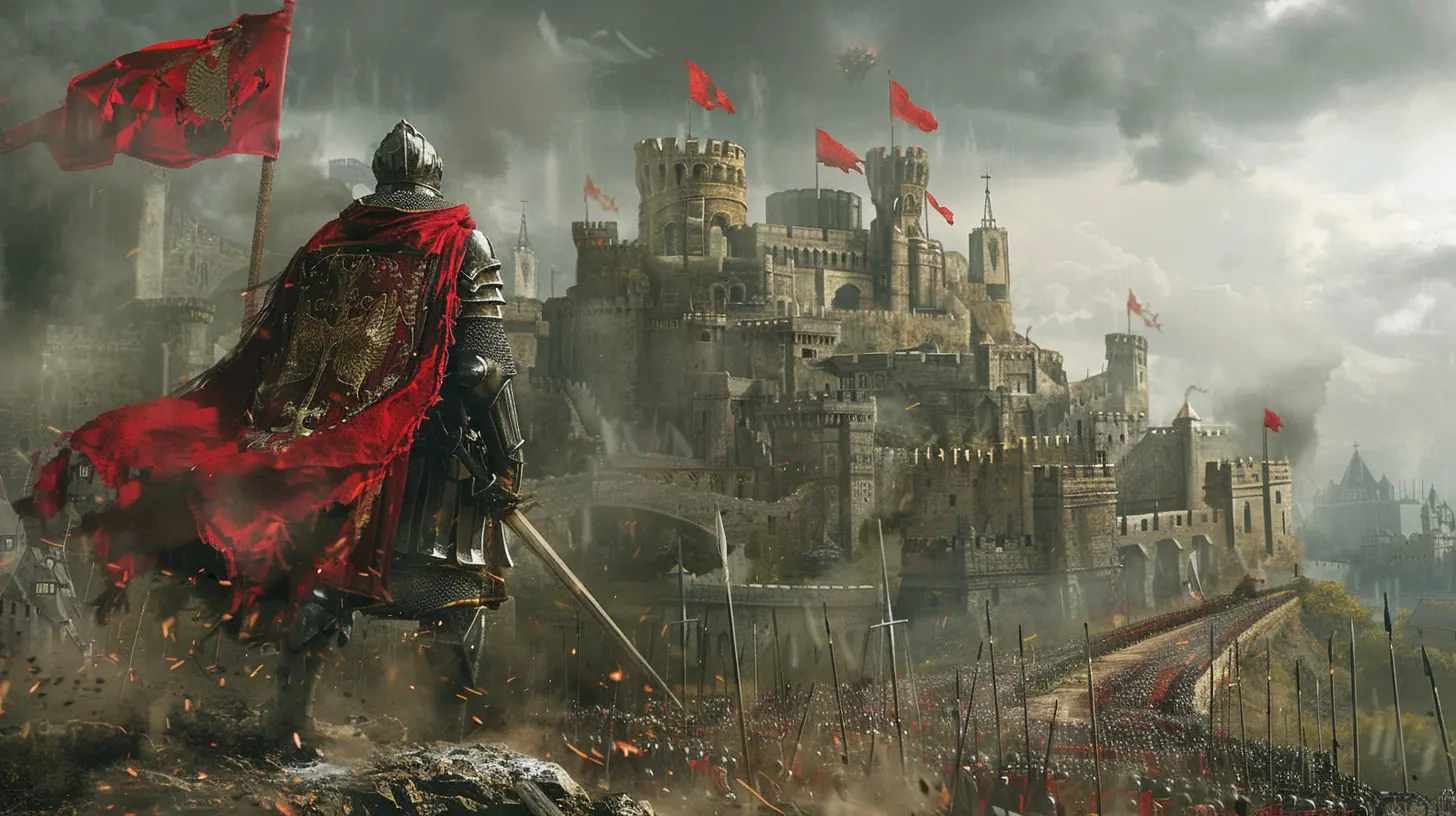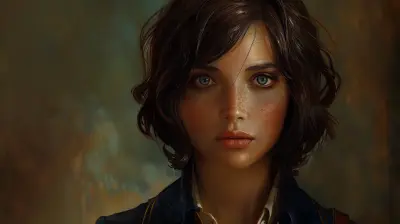How Tournament Hosts Choose Which Games Deserve the Spotlight
2 March 2025
If you've ever tuned into a gaming tournament or scrolled through social media during a massive esports event, you’ve probably wondered: why did this game make the cut? Why are some games front and center, gathering millions of viewers, while others barely get a mention? The process isn't as random as it might seem, and tournament hosts have their reasons for giving certain games the coveted spotlight.
Let’s break it down. Grab a snack, sit back, and let’s dive into how tournament organizers size up games, weigh their value, and decide which ones get the royal treatment.
The Popularity Contest: Why Numbers Always Matter
Let’s be honest—popularity is king in the gaming world. Tournament hosts are running a business, and numbers are their currency. They need games that can draw in massive audiences, both online and in physical venues. It’s simple: the bigger the crowd, the more sponsorships, ticket sales, and ad revenue they rake in.Think about games like League of Legends and Counter-Strike: Global Offensive. These games have stood the test of time because their communities are immense. Tournament hosts know they can fill an entire stadium with LoL fanatics or crash streaming platforms with CS:GO enthusiasts. For them, it’s a no-brainer.
But it’s not just about sheer numbers. It’s also about staying relevant. If a game’s community starts to dwindle or if a newer, shinier game enters the scene (looking at you, VALORANT), hosts have to adjust. They’re like DJs at a party—they play the hits that get people hyped, and if the crowd starts to thin out, they switch tracks.
Game Balance and Competitive Viability
Popularity may be the flashiest factor, but it’s far from the only one. Another major consideration is whether a game is competitively viable. What does that mean, exactly? In short, a competitively viable game is fair, skill-based, and balanced.Imagine watching a tournament where one character, weapon, or strategy is so overpowered that everyone just spams it the entire time. Would that be fun to watch? No way. Players would get bored, and the audience wouldn’t stick around. This is why tournament organizers are super picky about games that have consistent patches, updates, and a focus on balance.
Take DOTA 2, for example. The developers are constantly fine-tuning the game to ensure no hero becomes too dominant. A balanced game leads to better matches, and better matches lead to unforgettable moments. Hosts want games where players’ skills shine—nobody’s here to watch a glorified rock-paper-scissors match.
Spectator Appeal: Does It Look Good on the Big Screen?
Let’s face it: not all games are created equal when it comes to viewing pleasure. Some games are just naturally more fun to watch. Tournament hosts go out of their way to choose games that are visually engaging and easy for viewers, even casual ones, to follow.Think about fast-paced shooters like Apex Legends or visually stunning brawl games like Super Smash Bros. Ultimate. These games have thrilling, edge-of-your-seat moments that make for exciting viewing. It’s like comparing a blockbuster action movie to an artsy indie film—both have value, but only one is likely to fill a stadium.
Now contrast that with games that are overly complex or don’t translate well in a spectator setting. If people can’t make sense of what’s happening on-screen, they’ll tune out faster than you can say, “Where’s the next match?”
Longevity: Bet on Games with Staying Power
Esports tournaments aren’t just about what’s hot right now—they’re also about what’s going to stick around. Hosts don’t want to invest in games that are here today, gone tomorrow. They’re making a long-term investment in building a community, setting up infrastructure, and establishing regular events. If a game doesn’t hold up for more than a year or two, all that effort goes to waste.A prime example? StarCraft II. This game has been around for more than a decade and still manages to draw crowds thanks to its die-hard community and strategic depth. It’s like the old-school punk rocker of the esports world—maybe it’s not topping charts anymore, but it’s still filling concert halls.
On the flip side, there are games that burn bright but fade quickly. Hosts are cautious about hopping on trends. Remember Fall Guys? It was fun while it lasted, but it lacked the depth to stay relevant in competitive gaming. Hosts were quick to step back once they realized it wasn’t a long-term player.
Developer Support: Are the Creators Playing Nice?
Tournament hosts love games with supportive developers. Why? Because they’re the ones providing the tools to make tournaments successful. Whether it’s funding prize pools, organizing regional qualifiers, or offering technical support, developer involvement can make or break a game’s esports viability.Take Fortnite, for instance. Epic Games pumped millions into the competitive scene with massive tournaments like the Fortnite World Cup. That kind of backing grabs the attention of tournament hosts because it reduces their risk—and raises the stakes.
On the flip side, if developers don’t seem all that interested in supporting competitive play, hosts might think twice. After all, why take the time to set up an event if the game’s creators aren’t even willing to give it their all?
Cultural Impact and Trendiness: The Buzz Factor
Sometimes, it’s not just about the game—it’s also about the cultural moment. Games that resonate with players on a deeper level or spark widespread trends have an edge. Whether it’s because of a viral meme, a connection to pop culture, or a storyline that gets everyone talking, cultural relevance can tip the scales.For instance, Among Us experienced a meteoric rise thanks to memes, Twitch streams, and its social deduction gameplay. While it didn’t become a cornerstone of esports, its moment in the sun proved that a game’s cultural footprint can influence whether it gets some tournament attention (even if it’s short-lived).
Hosts know that sometimes, riding the wave of a trend can lead to massive viewership spikes—even if it’s temporary. It’s a gamble, but when it works, it pays off big time.
Community Engagement: The Heartbeat of Competitive Gaming
Here’s the thing: no matter how good a game looks or plays, it’s the community that keeps it alive. Tournament hosts deeply consider how engaged and passionate a game’s community is before choosing it for a major event.A game with a loyal, vocal fanbase is like a magnet for attention. Overwatch, for example, owes much of its early esports success to the vibrant community that rallied around it. When people are hyped about a game, they’ll show up to events, tune in to streams, and spread the word like wildfire. And that energy? It’s infectious.
Hosts also keep an eye on how well the community behaves. Toxicity or controversy within a fanbase can scare away sponsors, and nobody wants to deal with that kind of headache—even for a popular game.
The X-Factor: Unpredictable Wild Cards
Finally, there’s the unpredictable magic that every successful tournament game seems to have. Call it the X-Factor, the spark, or the secret sauce—whatever it is, it’s that special quality that makes a game stand out.Some games just feel right for tournaments. Maybe it’s the adrenaline rush of a last-second play, or the jaw-dropping skill it takes to master the game. Whatever it is, tournament hosts recognize it when they see it. It’s the same reason people flock to certain movies, songs, or books—it just clicks.
Wrapping It Up
So, how do tournament hosts choose which games deserve the spotlight? It’s a careful balancing act of popularity, competitive viability, spectator appeal, longevity, developer support, cultural impact, and community engagement. They’re not just picking games—they’re curating experiences that players and viewers will remember for years to come.The next time you watch an esports tournament, take a moment to appreciate the thought process that went into selecting the games on display. It’s not just about what’s trending or what has the most players. It’s about crafting a show that blends skill, excitement, and community into something bigger than the game itself.
all images in this post were generated using AI tools
Category:
TournamentsAuthor:

Tayla Warner
Discussion
rate this article
7 comments
Freya Moses
Choosing tournament games is like picking toppings for pizza—everyone has an opinion, and someone always wants pineapple! But in the end, it’s all about the flavor of the competition (and maybe a little cheese).
March 25, 2025 at 3:36 AM

Tayla Warner
Great analogy! Balancing diverse preferences while ensuring a competitive edge is key to selecting standout tournament games.
Kismet Franco
Deciding which games take center stage is like hosting a party: it's all about balancing popular hits with indie gems. The right mix not only entertains but elevates the competition, leaving players and spectators excited for what’s next!
March 22, 2025 at 4:28 AM

Tayla Warner
Absolutely! Striking that balance between popular titles and hidden gems enriches the tournament experience for everyone involved.
Kiera McKee
This article adeptly highlights the complexities behind game selection for tournaments, but it could further explore the influence of emerging trends and community sentiment in shaping these decisions, which are often overlooked yet crucial.
March 19, 2025 at 5:57 AM

Tayla Warner
Thank you for your insightful comment! I appreciate your suggestion to delve deeper into emerging trends and community sentiment. I will consider this for future articles to provide a more comprehensive view.
Dax Montgomery
Insightful analysis of game selection for tournaments!
March 18, 2025 at 6:01 AM

Tayla Warner
Thank you! I'm glad you found the analysis valuable. Your support means a lot!
Astra Wells
Spotlight choices reveal trends.
March 13, 2025 at 6:06 AM

Tayla Warner
Absolutely! Spotlight choices often reflect broader gaming trends and player interests, shaping the tournament landscape.
Wolf McElroy
Tournament hosts balance popularity, community engagement, and competitive integrity when selecting games, shaping the esports landscape and viewer experience.
March 11, 2025 at 4:18 AM

Tayla Warner
Thank you for your insight! Balancing these factors is indeed crucial for fostering a thriving esports environment while ensuring a captivating viewer experience.
Thea Palmer
Great insights! It’s fascinating to see how tournament hosts curate games for the spotlight, balancing popularity with innovation. This process not only fuels competitive spirit but also fosters community growth. Here’s to celebrating diverse games and the passion behind them—may every choice inspire players and fans alike! Keep up the excellent work!
March 4, 2025 at 4:31 PM

Tayla Warner
Thank you for your thoughtful comment! I appreciate your insights on the balance between popularity and innovation in game selection. Here's to celebrating our vibrant gaming community!
MORE POSTS

Turning Your Game Idea into Reality with Unity

How Video Games Became a Platform for Social Justice Movements

The Best Strategy for Every BioShock Infinite Battle

Gaming Hardware Wars: The Latest Tech Upgrades You Need to Know

Behind the Mic: A Day in the Life of a Game Voice Actor

Can Early Exploration Keep You Hooked in This Adventure?